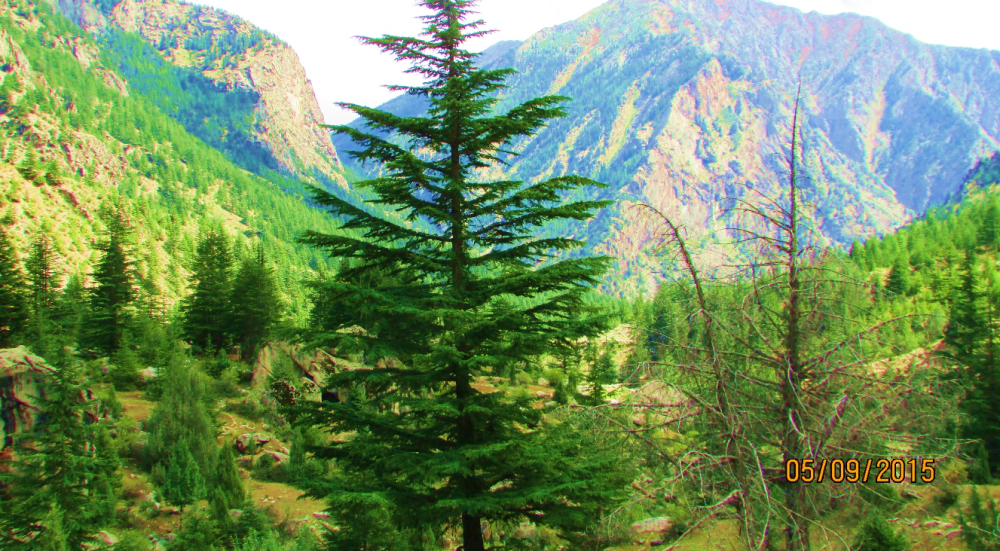Forest, Wildlife & Environment Department Government of Gilgit-Baltistan

Cedrus deodara (Pinaceae)
Common name: Diar, Deodar, Himalayan Cedar
Local name: Diar, Phulus
Description:
“A tree up to 50 m high and up to 3 m in diameter. Crown conical when young, with the drooping leader and branches drooping at the end (Fig. 67), older trees rounded. Branches are horizontally arranged, and the end of the shoots pendulous. One-year shoots are densely pubescent. Needles blue-green, about 30 in a cluster, 3-5 cm long, acuminate. Flowers appear in September and October. Cones solitary or in pairs. ovate or barrel-shaped. 7-10 cm long, 5-6 cm wide, rounded at the apex, bluish when young, reddish-brown when ripe; maturing from September to November; the seed is shed from September to December; seed scales 5-6 cm wide, usually glabrous on the upper side. Seed about 17 mm long, about 6 mm wide; wing large, light brown” (Vidakovic 1991).
Distribution and Ecology
The dominant specie of Diamer District in Gilgit-Baltistan. India and Pakistan: W Himal and S slopes of the Hindu Kush (Silba 1986, Vladimir Dinets e-mail 1998.01.02) at 1100-3000 m, “usually on silicate mother rocks. … The best trees are found on deep, well-drained soils. High atmospheric moisture is favorable. It is tolerant to shade, but young trees are prone to injury from frosts and cold wind” (Vidakovic 1991). It is a component of the temperate forest, usually on north-facing valley slopes, where rainfall ranges from less than 1000 mm per year up to 2500 mm per year, mostly in the form of winter snow. In these forests, C. deodara is associated with a wide array of conifers and some broadleaf trees. Species present may include Pinus wallichiana, Taxus baccata, Picea smithiana, Abies spectabilis, and Abies pindrow, as well as species of Quercus, Rhododendron, Acer, Corylus, Aesculus and Betula. At somewhat lower and drier (precipitation less than 1000 mm/year, mostly as snow) elevations it commonly occurs with Pinus gerardiana, Quercus ilex and polycarpous (Bhattacharyya et al. 1988).
